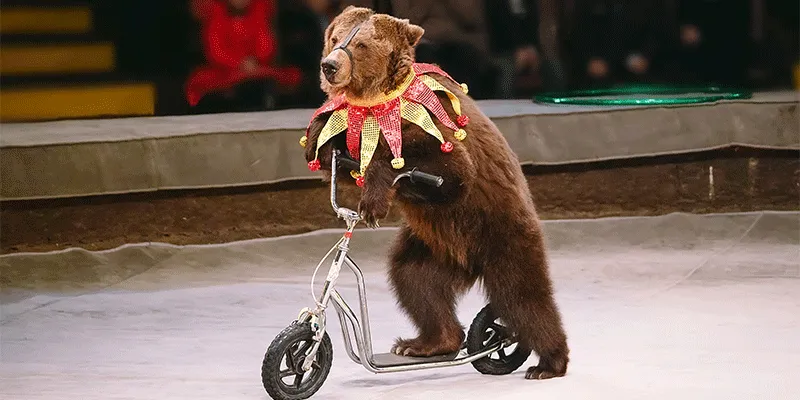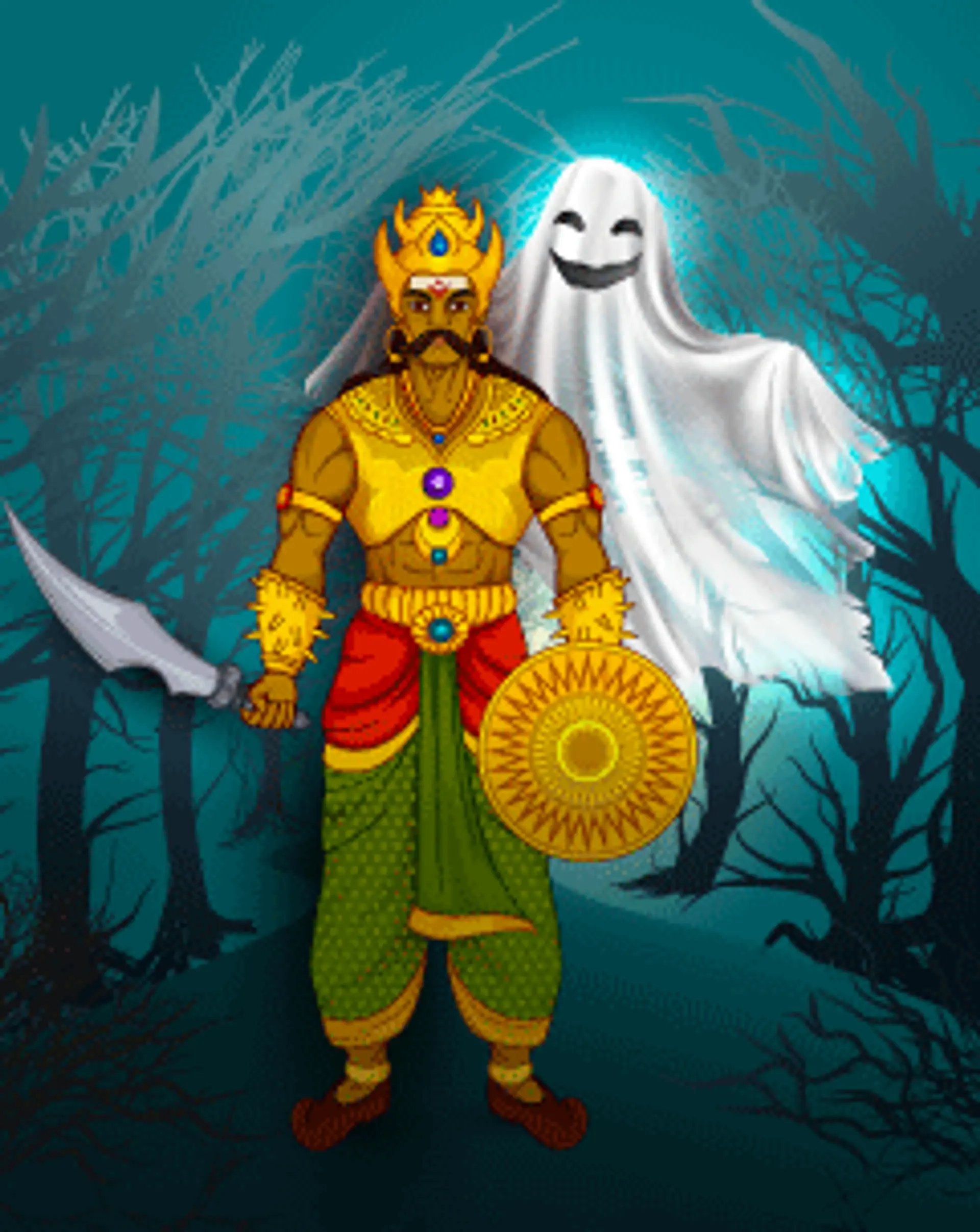Perception is an entrepreneur’s potent weapon!
A person’s perception of the world is influenced by his or her upbringing, awareness, preferences and aspirations. How will you use this tool to build a successful organisation? Check out what our columnists have to say and don't miss the contest at the end of the article...
“We are convinced about your product”, said the investor. “We have understood that your customers love your product and your market is huge. But before we invest $500 million in your company, we want to be convinced that you have the capability to lead your team to build the organisation that will be both profitable and sustainable for many years to come. We want to be convinced that you have it in you to transition from entrepreneur to leader.
So this is how we will establish your leadership qualities. We will narrate a story and at the end of the story, we will ask you a question pertaining to the story. If we like your answer, we will meet again to establish more of your leadership qualities. If we don’t like your answer, we will walk away. Each story will be around a particular theme. Our theme today is Perception”.
Perception means, very simply, the way one sees it. And the way one sees it is influenced by one’s upbringing, awareness, preferences and aspirations. So the way a fitness enthusiast will perceive French fries is very different from the way a junk-foodie perceives it. The product is the same, but perception makes it taboo for one and value for another.
In fact perception plays such an important role in the life of the organisation that we are prepared to go to the extent of saying it is the bedrock of all management! Let us illustrate this with a use case.
When we say circus, what comes to your mind? Tent. Outskirts. Animals. Clowns and jokers. Skimpily clad girls walking the trapeze. Lion tamer with his whip. Elephant riding a bicycle. Dwarf. Fortune teller. Nomads. Smell. Crowd. Danger. Family entertainment. This is the whole gamut of imagery that one word evokes.
But it is perceived differently by different people. To a five-year old, it is the most exciting day of his life. He sees the tent as exotic. Outskirts add to the adventure. The animals are what he is there for. The joker scares the bejesus out of him but what the hell, as long as he held his daddy’s hand tight, he is not scared, right? He only watches the jaw-dropping stunts of the trapeze artists, not how they are dressed.
The same circus to the kid’s parent offers a different perception. The distance is daunting, the tent and the smell of animal faeces around it avoidable. Some part of him even protests at the cruelty to animals. And he definitely does not like the crowd of gawking kids and their bored parents! But he still indulges his child because circus is seasonal and he promised a visit to the circus as reward for tidying up his room. So the parent perceives a trip to the circus as occupational hazard of being a parent!

The circus is perceived differently by children and adults
How did Guy Laliberte perceive it? The year was 1984. Kids had migrated to Playstations. Animal activists cried foul. Moving and maintaining animals and performers was more expensive than what audience were willing to pay for putting them on show. Open land, even on the outskirts was fast disappearing. Circus was a dying industry.
And just then, Guy Laliberte, a French Canadian who was a stilt-walker, accordion-player and fire-eater, said, ‘we reinvent the circus’!
And he created Cirque du Soleil, or Circle of the Sun. Pretty much like Apple did, he brought together the driving forces of several industries. There were performers as in the old circus, but these were stylish, sophisticated dancers and gymnasts who combined aerobics with acrobatics.
There was music too, but this wasn’t the thunderous beating of drums that was so circus-like. Instead the acts were set to lilting,-soul-lifting, peppy, foot-tapping, a capella music and music wasn’t just a background number, it contributed to the entertainment too.
There were no animals, of course, but there may be people outfitted as animals if the story warranted it!
And there was a strong story line. It had drama. It had actors. It had good, wholesome family entertainment.
The whole production was theatrical,- lavish, classy and svelte - and it brought together many artists of different genres – gymnasts, actors, musicians, entertainers, dancers, story-tellers, performers, props – to give the feel and experience of a bountifully produced Broadway musical.
It was a circus but it certainly was nothing like the circus perceived to be up until then. Today Cirque du Soleil have multiple permanent shows in Las Vegas, employ over 4000 people from over 40 countries, generate revenue of over $900 million, and have won every possible award under the sun!
My question to you, Mr. Entrepreneur, is this:
How did an almost illiterate, circus-performer change the perception of his audience with respect to a circus?
The entrepreneur was silent for a few minutes even as he mulled over the question. Then he said:
Laliberte knew the circus inside out. So he knew what worked and what didn’t. What worked was this whole aura, the mystique associated with a circus coming to town. There were announcements, there were billboards, there were hand-outs given outside car parks, malls, hospitals, schools. Special acts were highlighted.
The tents were pitched on the outskirts, they were lit up like a giant Christmas tree, and there were helium balloons welcoming the kids, there was loud music, there were garishly dressed performers, the lion tamer was all bravado, the clowns invited kids to dance with them, the jokers laughed at themselves, the elephant pedaled away as if he was on an exercycle! There were sugar candies that stuck all over the kids’ faces and there were pretzels that popped like corn. They all came together to make the coming-to-town of this circus a much-anticipated annual event, like none other, for kids of all ages.
What didn’t work was the travel, upkeep and running costs of the circus. And the enormous time and effort that went into placating and convincing animal activists that no violation was taking place in the circus.
Laiberte retained every bit that worked but in a different and more grandiose form. In Cirque du Soleil, acrobats, trapeze artists and stilt walkers were phenomenal dancers trained in various dance forms and gymnastics. They performed like acrobats of yore but to a well-choreographed contemporary classy music; garish was replaced by sophisticated bling; the animals were replaced by performers dressed as animals, playing a role.
And if in the traditional circus, each act was performed as a silo, in Cirque du Soleil, there was a definite story performed through various acts through the evening. So the audience sat spellbound through a glitzy, peppy, theatrical Broadway musical except that it wasn’t a Broadway musical but a circus!
And most importantly, the circus’ primary customer was the kid who brought his parents along and they pretended to enjoy for the sake of their ward. And because the circus was meant for kids from all classes of society, the circus could not command premium ticket pricing. So even if every single show ran to packed houses, the ticket revenue could not cover the direct and indirect costs.
In Cirque du Soleil, the parents were as much primary customers as their children. They came for the story, they enjoyed the gymnasts’ performance, they laughed at the bear’s antics, they roared at the clown’s clumsiness and they loved the whole song and dance, the upbeat, upmarket, dog-and-pony show that the reinvented circus put out for them. And because it was a glitzy show and it was meant for the well-heeled, discerning customer, Cirque du Soleil commanded uber premium ticket pricing, which more than covered their costs.
Let me sum it up Mr. Investor. Laliberte kept the excitement and mystique of a circus intact, but delivered the excitement and mystique through a brilliantly produced, well-curated, artistically-choreographed Broadway musical. Bingo. Circus suddenly was the new flavor everywhere, from Vegas to India!
It is tragic that Ringling Bros. and Barnum and Bailey who were the big guns of the circus industry those days did not see it fit to reinvent the circus in this fashion. They were too caught up in doing what competition did or in scaling down costs and in the process, diminished the whole experience. Truthfully, they wrote the epitaph on the industry with their myopic approach and strategy. Like it is logical to think that Sony would invent the iPod after they invented transistor and Walkman, right? But they didn’t and a computer company changed the way customers heard music by changing their perception of how music could be accessed!
The entrepreneur stopped speaking. The investor smiled at him and said, well done, see you next week.
Our question for the readers: share with us your personal experience of how perception was a deal-maker or deal-breaker! Mail it to us before 19th Dec to [email protected]. We will pick one winner, publish that story on 22nd Dec and you will get a chance to have a free half-hour mentoring session with Nandini Vaidyanathan.







